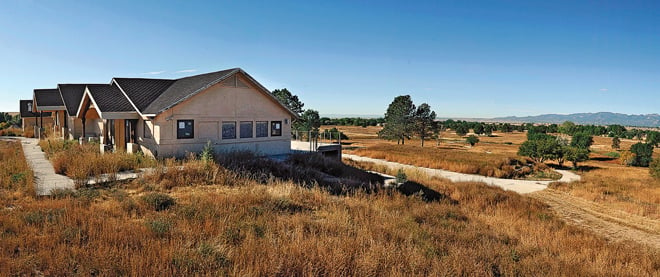Who wants to buy a dead golf course?
Across the U.S., hundreds of golf courses sit deserted—victims of the foreclosure crisis, and golf’s steady decline
Share

When B.J. ran into the house yelping in pain, his paw bleeding, Lenny Leonov thought his 60-lb. dog had stepped on some broken glass. But when the brown and white boxer started convulsing and foaming at the mouth, Leonov rushed the dog to the vet. It was too late. B.J. had been bitten by a rattlesnake, and died in the emergency room. This wasn’t Leonov’s first brush with exotic animals at his suburban Florida home. A year earlier, a six-foot alligator had to be removed from his backyard.
Leonov doesn’t live in the jungle; he lives next to an abandoned golf course. His North Fort Myers home backs onto the former Lochmoor Country Club. It was shuttered in 2005 to make way for a lush new golf course, three condo towers and a marina. Then the financial crisis hit. The development was abandoned, another victim of the U.S. foreclosure crisis. The golf course has since grown wild. “It’s so bad,” says Leonov, “the weeds around the water hole next to me are 12 feet high.”
This post-apocalyptic scene is playing out across the U.S., where predictions of a boom in golf failed to materialize, leaving a trail of closed golf courses—and thousands of angry neighbours—in its wake. Starting in the mid-’90s, developers built thousands of new courses in the U.S., but the Internet bubble, 9/11 and the financial crisis, one after the other, ransacked Americans’ disposable income. Hundreds of golf courses have closed in recent years, many of them tied to grand real estate development plans, like the one behind Leonov’s home. “Most of these golf courses were built to sell real estate with very little due diligence as to whether the golf course could survive on its own,” says Greg Nathan, senior vice-president of the National Golf Foundation, based in Jupiter, Fla.
“We’ve got a black eye as an industry,” says Bobby Weed, a Florida golf course designer. He predicts another 1,500 courses will close in the U.S. in the next 10 years. Eventually, banks and mortgage lenders will take over these properties, explains Jim Koppenhaver, president of the market analysis firm Pellucid Corp. But as the fight over ownership plays out, thousands of acres of golf greens, ponds and clubhouses sit abandoned, slowly decaying, dragging down neighbourhood property values along with them. And those who bought property along the courses are forced to watch the formerly manicured lawns grow out of control, bringing a range of nuisances, from exotic animals to illegal activity. Last October, Philadelphia police found a marijuana grow op in a deserted golf course in Cheltenham, a nearby suburb.
A different weed problem is afflicting Marcia Gieck, a retired teacher in Colorado Springs, Colo. Her house sits just behind an abandoned golf course. A few years ago, her biggest complaint was the odd golf ball that used to land with a thunk in her backyard. Nowadays, her yard, which sits next to a dry, brown field and a boarded-up clubhouse, has become a landing pad for tumbleweeds. Last year alone, she removed 35 sq. feet of the stuff from her lawn. “If we have a mess in our backyards, we are required to clean it up,” says Gieck. Many cash-strapped local governments don’t have enough money to enforce bylaws against absentee landowners. Complex ownership disputes make the task even more challenging. In some cases, however, community groups and governments have been able to raise enough funds to buy the abandoned golf courses and rezone them for redevelopment, parkland and even smaller courses. In Florida, Royal Palm Beach, for example, is turning a defunct golf course into a park featuring playgrounds, trails, lakes and a driving range.
Weed, who has a found a niche market revamping moribund golf courses, is now applying similar redevelopment strategies. His plans for future courses include smaller clubhouses, hiking trails and ponds where people can fish, boat and swim. Developers must cater to the needs of the current generation, he says. The children of baby boomers have less time and money than their parents, and little interest in golf. With golf on the wane, and the U.S. economy far from healthy, he’s sure to have work for years to come.